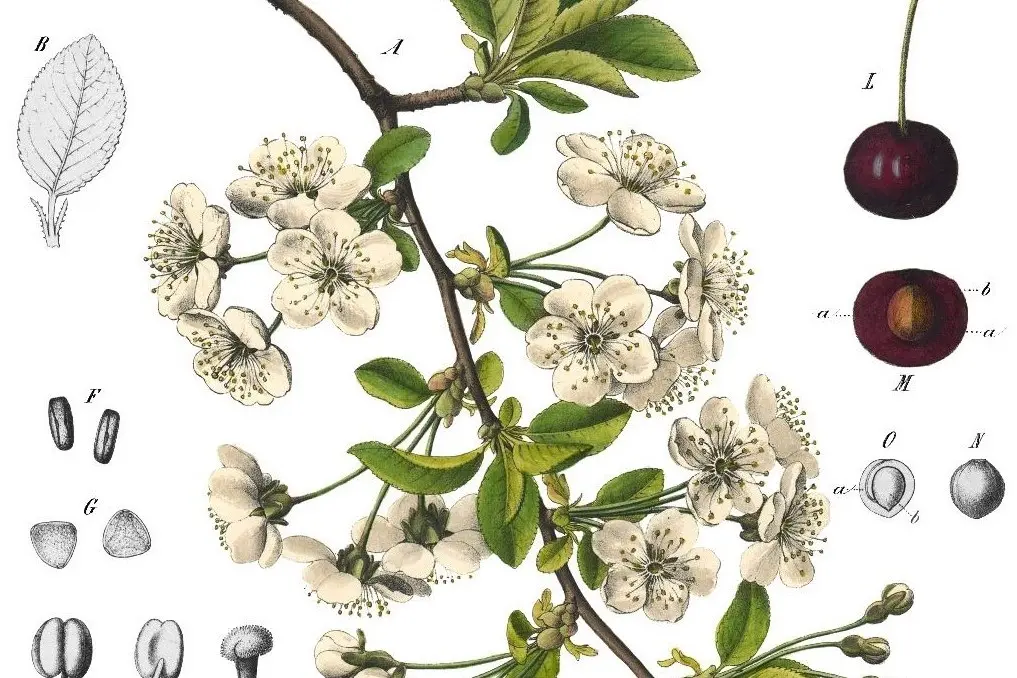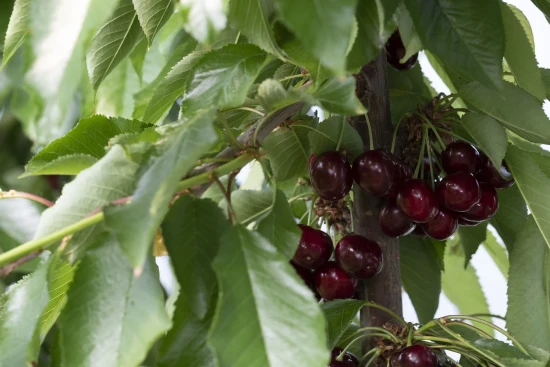In the competitive world of fruit, size matters, and in the case of sweet cherry (Prunus avium L.), it reigns supreme. A large, fleshy fruit not only pleases the eye but also promises a superior sensory experience.
But have you ever wondered what orchestrates the development of a cherry so that it reaches that premium caliber? The answer is not a matter of chance, but rather written in its very genome. This feature dives into the fascinating genetic and molecular control of fruit size and how this pre-harvest “master plan” predictably determines the cherry’s success well beyond the moment of harvest.
The genetic architecture
The size of a cherry is a complex quantitative trait, which in genetics means it is the result of the combined action of numerous genes and their interaction with the environment. However, what has struck scientists is its exceptionally high heritability (H² > 0.8).
A value close to 1.0 is an unmistakable signal: genetics is the dominant force. The size differences we observe between a ‘Sweetheart’ cherry and a ‘Picota’ depend far more on their genes than on variations in fertilization, sunlight, or irrigation.
This strong genetic imprint has allowed researchers to “map” the cherry genome and discover that, although there are many “musicians” in this orchestra, there is one main conductor.
A major-effect locus (QTL), a specific region of linkage group 2 (LG2), acts as a genetic “hotspot” capable of explaining, on its own, up to 54% of the variation in fruit weight and diameter. Here lies one of the best-kept secrets of cherry domestication.
The cellular foundation
At the microscopic level, the final size is the sum of two phases:
- Cell proliferation (division) – Right after fertilization, the fruit goes through a phase of intense cell division. At this stage, the total number of flesh (mesocarp) cells is set, representing the framework and the maximum size potential.
- Cell expansion (growth) – Once the number of cells is fixed, they begin to expand, accumulating water and sugars in their vacuoles. Each cell can increase its volume up to 100 times, swelling the fruit to its final size.
The key, revealed by genetics, is that the main determinant of size is the number of cells, not their expansion. Larger cherry cultivars owe their size to genes that allow for a significantly higher number of cells to be formed during the critical early phase.
The molecular protagonists
Thanks to high-resolution genomics, we have moved from identifying large chromosomal regions to pinpointing specific genes. There are many, but two are the true protagonists:
PavCNR12: the master brake
Located at the heart of the LG2 “hotspot,” the PavCNR12 gene (Prunus avium Cell Number Regulator 12) is a negative regulator of cell proliferation. Its protein acts as a molecular “brake,” signaling cells when to stop dividing.
Mode of action: evolution and domestication have not acted on the protein itself, but on its promoter (the switch that regulates how much of the protein is produced).
A “strong” allele (present in wild cherries) produces a lot of brake protein, stopping cell division early and resulting in smaller fruits.
A “weak” allele (selected in elite cultivars) produces less brake protein, partially releasing the block and allowing for more cycles of cell division, resulting in more cells and thus larger fruits.
PaCYP78A9: the growth accelerator
While PavCNR12 applies the brakes, the PaCYP78A9 gene, belonging to the cytochrome P450 family, acts as a positive regulator—a true “accelerator” actively stimulating growth.
Mode of action: it is believed to be involved in the synthesis of a signaling molecule—likely an as-yet-unidentified phytohormone—that stimulates the cell cycle machinery. Silencing experiments of this gene have produced smaller cherries with fewer cells, demonstrating that PaCYP78A9 supports both cell proliferation and expansion.
In short, the final size of the cherry is the result of a dynamic balance between signals that brake (PavCNR12) and signals that accelerate (PaCYP78A9) growth. The most advanced breeding strategy aims to “pyramid” the optimal alleles: a weak brake and a strong accelerator.
The post-harvest link
Traditionally, genetics (pre-harvest) and physiology (post-harvest) were treated separately. Today we know they are closely interconnected: the fruit’s genetic architecture in the field establishes a fundamental predisposition to its behavior in storage.
Firmness and mechanical damage
While LG2 controls size, linkage group 4 (LG4) has emerged as the post-harvest quality “hotspot.” Here lies a major-effect QTL that regulates firmness—a key trait for withstanding transport and preventing pitting (skin depressions).
Causal cascade: in this LG4 region are located key regulatory genes, such as NAC transcription factors (e.g., PavNAC56). These genes act as switches that, during ripening, activate a set of enzymes that modify the cell wall (such as polygalacturonases and pectinases), degrading the pectins that act as “cement” between cells.
An allele that slows down the activation of these genes results in slower softening, firmer flesh, and a significantly longer shelf life.
Cracking and fungal infections
Susceptibility to cracking (rain-induced splitting) also has a solid genetic basis, with QTLs identified on LG1 and LG5. These loci control the elasticity and integrity of the fruit’s cuticle and epidermis.
A cherry genetically predisposed to having a more resistant skin not only avoids an aesthetic defect but also reduces the main entry point for opportunistic pathogens such as Monilinia (brown rot) and Botrytis.
The future is precision
Understanding these mechanisms is revolutionizing the way new cherry varieties are created.
Genomic selection (GS)
Beyond single-gene analysis, GS harnesses thousands of DNA markers distributed across the genome. Using advanced statistical models, it calculates a genomic estimated breeding value (GEBV) for each complex trait (size, firmness, sweetness).
This allows breeders to rapidly and with extraordinary precision predict the performance of a cross, exponentially accelerating genetic progress.
Gene editing (CRISPR/Cas9)
This technology acts like molecular scissors with ultra-high precision. Using a guide molecule (guide RNA), the Cas9 enzyme can be directed to an exact point in the genome—for example, to the promoter of the PavCNR12 gene—to cut and rewrite the sequence.
In theory, this could take a cultivar with excellent flavor but small size and convert its “strong brake” allele into a “weak brake” allele in a single generation, without altering the rest of its valuable genetic background.
We have entered an era of precision breeding. By integrating genomic selection prediction with the efficiency of molecular markers and the genetic “surgery” of CRISPR, breeders no longer just select cherries—they design them to be large, tasty, resilient, and long-lasting, meeting the needs of the entire supply chain, from field to consumer.
Image source: SL Fruit Service
Jesus Alonso Sanchez
El mundo de la cereza
Cherry Times - All rights reserved












